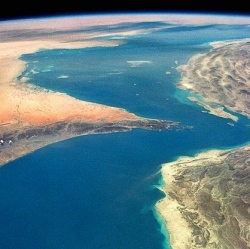
Orbiting satellites continuously monitor the world from above and are invaluable for everything from weather forecasting and navigation to military operations and radio and TV broadcasts. The problem is that the coverage is not as universal as one might wish.
True, a string of satellites, for example, can be placed in geosynchronous orbit to look down on the Earth, but looking at high latitudes of the Arctic and Antarctic require satellites in low-Earth polar orbits that can only pass over the region for a few minutes at a time.
As part of its five-year VisionSpace project, ESA examined the mechanics of orbital satellites to look for unconventional ways of approaching space missions. One idea was to apply Non-Keplerian Orbits (NKO) by using solar propulsion techniques similar to the one that put the Kepler space telescope back into commission.
Keplerian orbits are the elliptical orbits of the planets, moons, and artificial satellites as they revolve around their principals. NKOs, on the other hand, are orbits that use a complex balancing of forces to produce anything but a conventional orbit. The best known version of these are the Lagrangian points where the gravity of two large bodies, such as the Sun and the Earth, effectively balances out, so a small object will more or less hover around a point in space.
According to ESA, a similar balancing act could be arranged over the poles of the Earth by using a very large, yet very light and simple spacecraft consisting of a solar sail and an electric propulsion engine like a Hall thruster. The solar sail would catch the solar winds to provide thrust, which would be augmented by the gimbal-mounted thruster powered by tiny solar cells embedded in the sail.
Separately, the solar sail and thruster wouldn’t able to provide the proper thrust-to-weight ratio, but together they could balance the equation of forces of the Earth and the Sun and place the spacecraft into a tiny orbit over one of the Earth’s poles with a minimum expenditure of propellants.
"Standard space missions employ conventional elliptical Keplerian orbits," says Colin McInnes, Professor of Engineering Science at the University of Glasgow. "However, our VisionSpace project has been investigating novel families of orbits and space systems across a broad range of sizes that could make use of additional factors such as solar radiation pressure, air drag or gravitational interactions.
The space systems range from microscale applications such as satellite swarms and dust clouds, to mesoscale large deployable space webs and solar sails, all the way up to macroscale solutions such as asteroid capture."
ESA says that if the technology proves practical, a pole-sitting satellite would allow for constant observation of the high latitudes for applications such as climate science and telecommunications.
